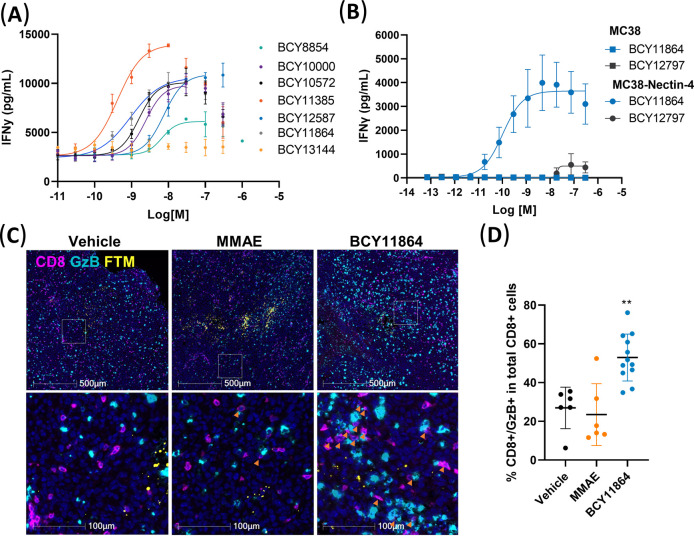Figure 6.
In vitro functional activity and in vivo pharmacodynamics of Nectin-4/CD137 Bicycle TICA. (A) Human PBMCs cocultured with HT1376 cell line were treated with anti-CD3 (OKT3) to induce CD137 expression and Bicycle TICAs were added. (B) Human PBMCs cocultured with mouse MC38 cell line or MC38-Nectin-4 were treated with anti-CD3 (OKT3) and BCY11864 or BCY12797 was added to the coculture system. (A, B) IFNγ released into the coculture supernatant was measured after 48 h. Data are mean/SD (n = 3 replicates). Data were fit using log(agonist) vs response–variable slope (four parameters) in GraphPad Prism V.8.4.3. (C) BCY11864 increases the numbers of cytotoxic CD8+ T cells in contrast to vehicle and monomethyl auristatin E (MMAE). MC38-Nectin-4 tumors injected with vehicle, BCY11864, and MMAE were evaluated for the presence of cytotoxic T cells (CD8+/GzB+) by immunohistochemistry (IHC) 24 h after microinjection. Pink: CD8; aqua: GzB; yellow: fluorescent tracking marker FTM; blue: nucleus (4′,6-diamidino-2-phenylindole (DAPI)). (D) Quantitation of double positive CD8+/GzB+ cells from tumor tissues normalized to total CD8+ cells. **p < 0.001, one-way ANOVA with Dunnett’s post-test.

